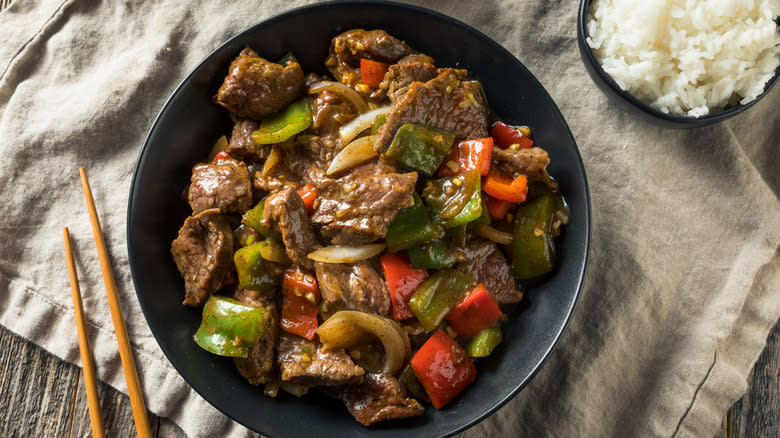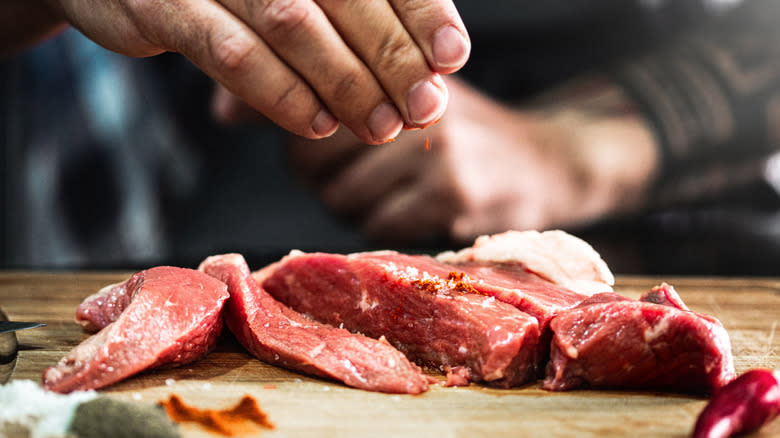The Slicing Tip For Beef Stir-Fry That Ensures Tender Bites Of Meat

If your beef in black bean sauce tastes as chewy as an old boot then you've probably been skipping a vital prep step — slicing your meat against the grain. This simple move produces beef stir-fries that are tender and succulent instead of stringy, rubbery, and overcooked. But what does cutting against the grain mean anyway?
Take a closer look at your beef and you should be able to see the muscle fibers running along the surface in relatively straight lines from one side to the other. The direction of these parallel lines is what's known as the grain. If you cut your beef in the same direction, you'll end up with slices of protein with very long fibers that are hard to chew. You must slice the beef perpendicular to the grain to cut the fibers into shorter lengths. This is particularly important for stir-fries because the meat has to cook at speed, unlike slower cooking methods where tough, longer fibers have time to break down and soften over an extended period.
Choosing the best cuts of meat for stir-fry (such as skirt, strip, or flank steak) is the first step to eliciting tender results. For example, cuts with distinct grains, like brisket, are tougher than those with finer grains that are harder to see, such as tenderloin and filet mignon. However, it's vital that you cut across the grain to guarantee that each bite is deliciously juicy and yielding no matter which cut you select.
Read more: The Most Popular Cuts Of Steak Ranked Worst To Best
Slice Your Beef As Thinly As Possible

Once you've settled on which direction to cut your beef, aim to slice it as thinly as possible to encourage it to cook quickly in the intense heat of the wok. This will guarantee that your protein remains tender and your vegetables stay crisp. If the slices of beef are too thick, they'll need to cook longer to allow the heat to reach the center. This results in strips of beef that have a fibrous texture and a chewy outer surface, as well as overcooked vegetables that have lost their appetizing crunch.
Freezing your stir-fry beef for 30 minutes can make it easier to cut it into super-thin slices. However, if you don't have time to freeze your flank steak, you can flatten it with a mallet or rolling pin to tenderize the connective tissues in the meat before slicing it against the grain. Coating your protein in cornstarch and baking soda before stir-frying them is another useful move to tenderize the fibers. Once you've mastered all these tips and techniques for the perfect stir fry, you'll soon be recreating restaurant-style dishes at home that are lusciously tender and light, such as spicy sesame beef and beef in black bean sauce.
Read the original article on Tasting Table


